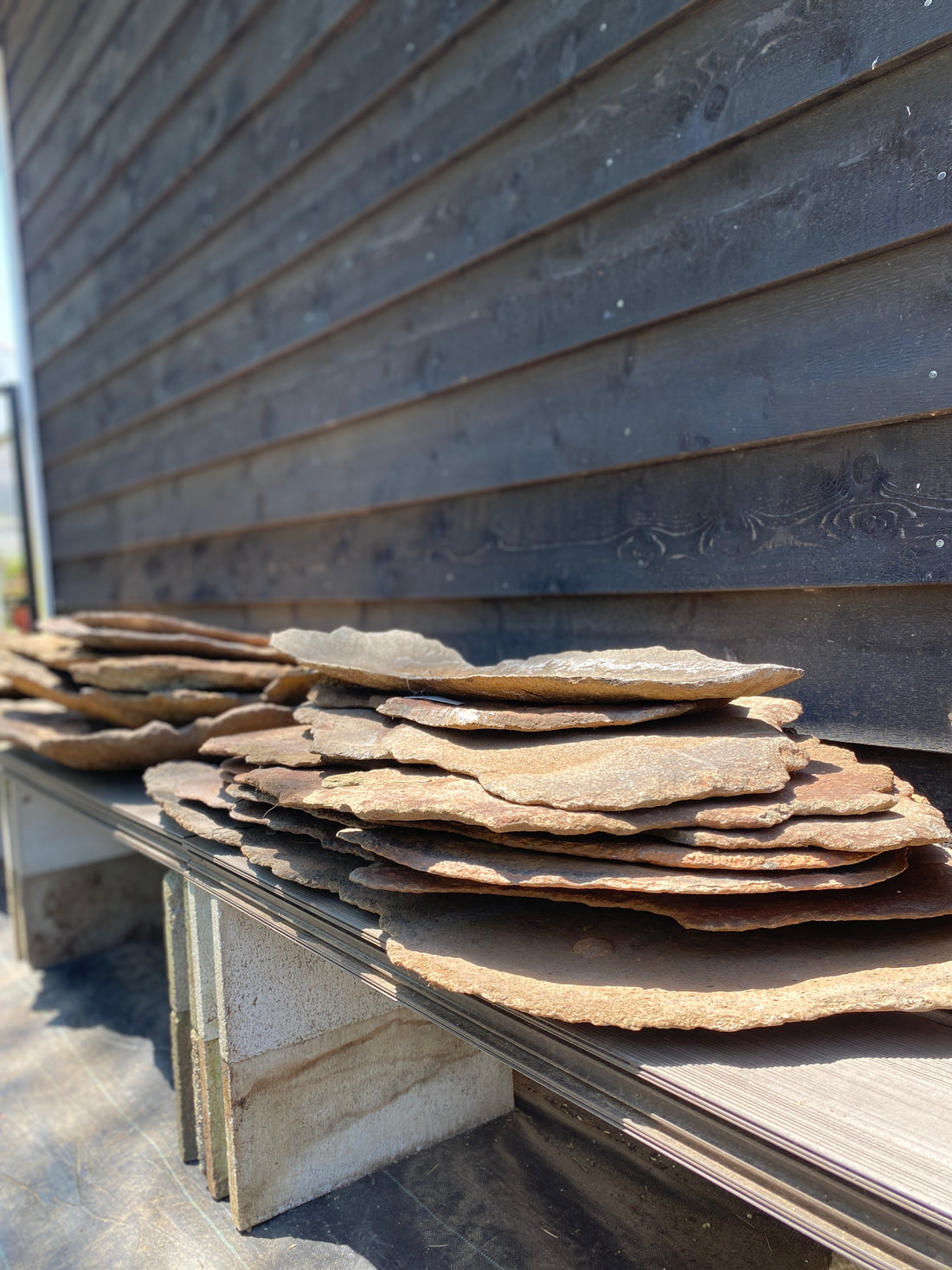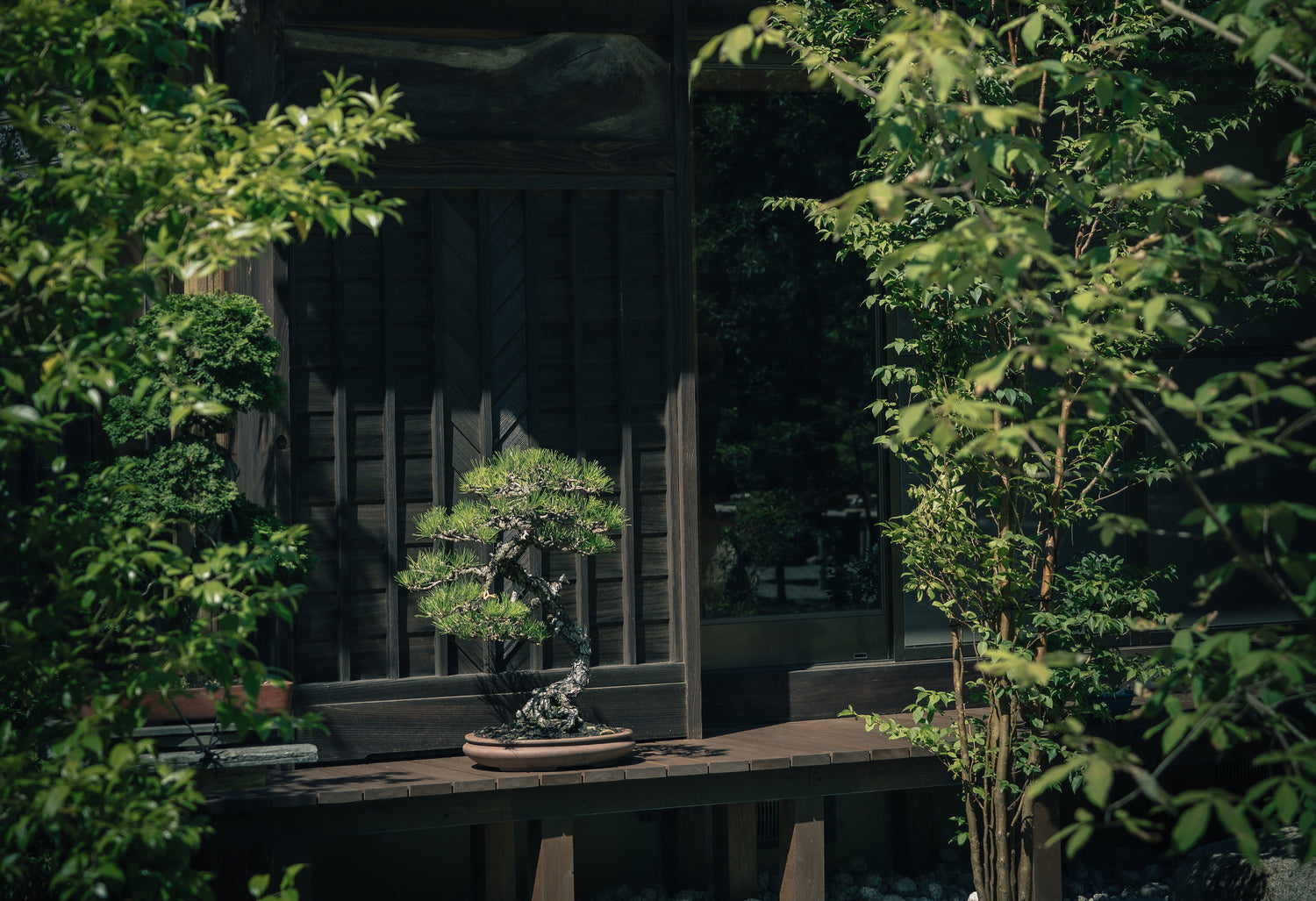Forest plantings and compositions made with slabs are consistently captivating. In this article, we will delve into the universe of bonsai slabs, exploring a selection of various types found in Japan and their capacity to enhance your bonsai artistry.

Stones vs. Slabs
Stones: In bonsai, "stones" refer to materials like Ibigawa or other types of rocks used for root over rock or stone plantings. This involves incorporating these stones into the root systems of a tree.
Slabs: on the other hand, are flat or crescent-shaped stones that are not integrated into the root system; instead, trees are planted on top of them, using them as platforms for planting.
Kurama Ishi: the pinnacle of bonsai slab
To embark on our journey into the world of bonsai slabs, let us start with the real deal the honmomo as it were, the "Kurama ishi" (鞍馬石).
Kurama Ishi gets its name from the Kurama River (near Kyoto), the location where these stones are collected. These stones possess an unmistakable texture (a type of dolomite or granite) and captivating coloring.

Distinctive characteristics
Distinctive Colors: The color of Kurama Ishi stone is typically between orange and red and then sometimes, very occasionally, you see these as pink or black.
Natural Layered Quality: One of the remarkable features of Kuramaishi stones is their natural, layered quality. When you observe crescent and original shapes, they seem to peel off like layers of an onion. It's essential to note that these shapes are not the result of human manipulation but rather the inherent characteristics of the stone.
Variation in Shapes: Not all Kuramaishi stones resemble onions in their layering. Some may take the form of slabs. Regardless of their specific shape, what sets them apart is their warm and inviting texture and color.
The Drawbacks of the Kurama Ishi
While natural Kurama Ishi possess their unique beauty, they do come with some drawbacks. One significant limitation is their lack of substantial tensile strength. These stones are rather fragile, and if mishandled or subjected to excessive weight or pressure, they can easily crack. It's not uncommon to encounter natural slabs with visible cracks, fissures, or signs of repair.
Additionally, another practical consideration is their weight. Larger Kurama slabs can be quite heavy, which can pose challenges when working with them.
Tone Kurama Ishi: A Synthetic Solution
To address these limitations, someone along the way came up with an ingenious solution: Tone Kurama Ishi. Tone Kurama Ishi, named after the town of Tone, offers an intriguing alternative to natural Kurama Ishi stones. Crafted by a family of artisans in the 1970s and 1980s, these synthetic stones are cast, not collected. Here's what you need to know:

Uniqueness of these slabs
Tone Kurama Ishi distinguishes itself through enhanced durability and lighter weight. These stones are composed of a combination of granite dust, sand, and a type of polyurethane fiberglass, making them less susceptible to cracking and considerably lighter.
The making
Instead of quarrying slabs, these artisans made castings of the faces of large boulders. They used a series of positive and negative molds to replicate the natural shapes of Kuramaishi slabs, resulting in Tone Kurama Ishi.
Unfortunately, the specific process used to create Tone Kurama Ishi was lost when the maker passed away. Unfortunately, his family did not recognize the value of the molds and the production process and as a result, they discarded both, and the specifics of this particular process remain unknown today.
An interesting historical tidbit is that during the economic boom of the 1980s, the craftsman responsible for producing these stones had a relationship with Saburo Kato, my teacher's grandfather. Consequently, all Tone Kurama Ishi produced during that time were exclusively crafted for Mansei-en, the garden where I studied.
Rarity
There is a finite number of Tone Kurama Ishi in existence, which adds to their desirability. They are highly sought after and appreciated for their close resemblance to natural Kurama Ishi in terms of texture and color.
Remarkably, the color of Tone Kurama Ishi remains unchanged over the years, even after five decades. This attests to the high-quality craftsmanship and expertise of the artisan responsible for their creation.
Tone Sabi Ishi: A Unique Man-Made Alternative
Within the world of man-made slabs for bonsai, one notable variety is the Tone Sabi Ishi. This type stands out due to its distinct manufacturing process and the continued craftsmanship of its creator, who is still active today. The key points are:

Craftsmanship and process
The Tone Sabi Ishi is crafted using a patented process that differs from the Tone Kurama Ishi. While both types are impressive, the quality of the molds used for the original Tone Kurama stones truly sets them apart. Unlike Tone Kurama Ishi, the Tone Sabi Ishi may show mold lines along the edges.
Longevity and Weathering
When considering the longevity of these stones, it's important to note that they differ. While all stones will age over time, Tone Sabi Ishi may begin to deteriorate after a few years of UV exposure, primarily showing signs of age in the surface texture.
Modern Alternatives
There are a number of other lesser known man made slabs of varying quality available in Japan, occasionally we come across them and we are happy to offer them on our website.
Understanding the differences in slabs will help you find the most suitable one for your rock planting as well as comprehend the variations in price points when acquiring a slab. Factors like craftsmanship, longevity, and how they age over time all contribute to the differences in value. Each type possesses its unique charm and all are suitable for various bonsai applications. Slabs, stones, and rock plantings are essential components of our Bonsai school. Check it out if you want to elevate your bonsai skills!


